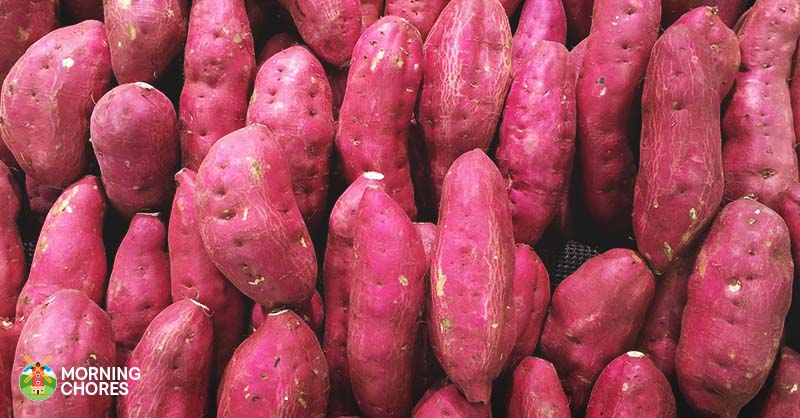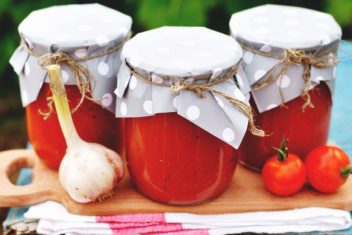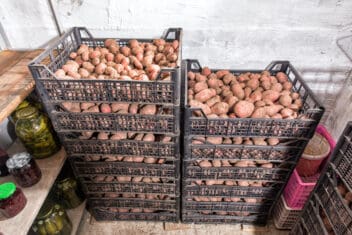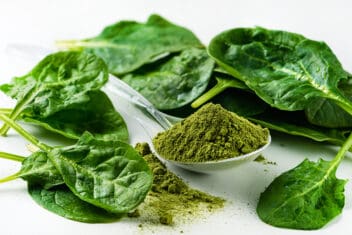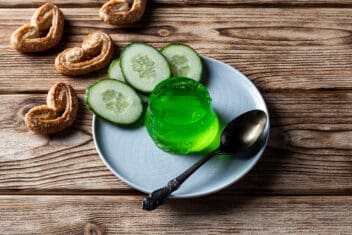Are you in love with fall? Oh, I am, I am! I love the cool temperatures, delicious recipes, football, sweatshirts, and fires around the fire pit.
However, I also love raising a fall garden. There are so many vegetables you can raise in the fall. It really helps add to our family’s food storage too.
Yet, I have to share, I just learned that one of my favorite vegetables that I can grow in my fall garden is actually a sweet potato. I used to not love them so much, but I learned how to fix them recently and have completely changed my mind.
However, do you know that you can’t just harvest sweet potatoes and cook them? Well, you can’t. They must be cured. Aren’t really sure how to do that? No worries, I’ve got you covered with this article.
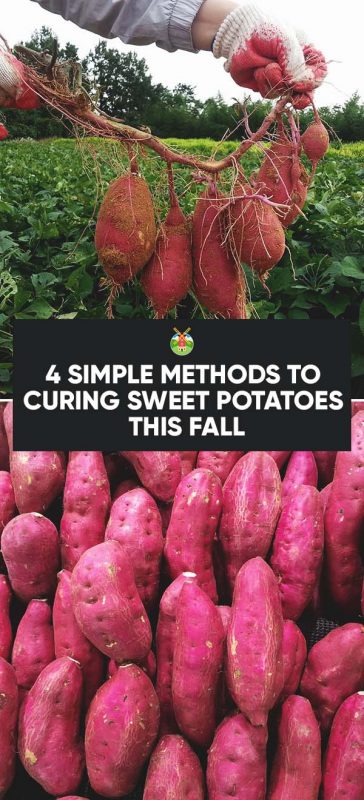
Curing Sweet Potatoes
So here is how you go about curing your sweet potatoes:
Why Cure a Sweet Potato?
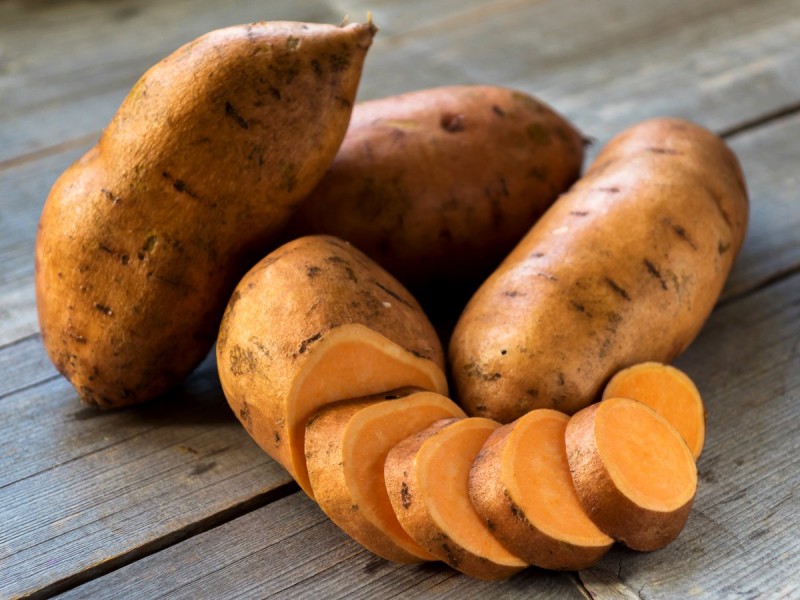
If you harvest a sweet potato, then bring it in and cook it, you’ll be extremely disappointed. It will have a really starchy flavor and not be sweet at all.
So if you are wondering what changes the flavor between harvest and when you usually taste them, it is a process called curing.
Basically, when you cure a potato, you put the potato through a process that takes all of those starches and breaks them down into natural sugar. This is what gives a sweet potato their naturally sweet flavor.
Now, this may sound like a lot of work, but if you love sweet potatoes, it really isn’t that bad. Not to mention, they are a great source of vital nutrients that your body will enjoy over the winter months when so many natural vitamins are scarce.
Also, you need to know that when curing sweet potatoes it also helps to seal in the potatoes natural moisture and activate enzymes that will repair any damage that was done during the harvest of the sweet potato.
However, keep in mind, that curing needs to take place only hours after harvest because if not, you could lose the potatoes as moisture will begin to get to them.
What Is Required During Curing?
Now that we know that curing is what makes sweet potatoes sweet, you may be wondering what curing actually is.
Well, it is a process that takes anywhere from 4-14 days. It is where the sweet potatoes are placed in a hot environment that the temperature hangs somewhere between 80-85°F.
Then the area is kept at about 90% humidity. The closer you keep to these guidelines when trying to cure the sweet potatoes, the faster the sweet potatoes should cure.
After the curing process is done, then you store your sweet potatoes in an area that is kept around 55-60°F for about 6-8 more weeks. This is so the curing process can finish.
Once this is done, then you’ll store your sweet potatoes in a root cellar, basement, closet, or anywhere else that is dark, cold, and dry.
Then they’ll be ready to enjoy over the winter.
Curing Sweet Potatoes in a Small Space
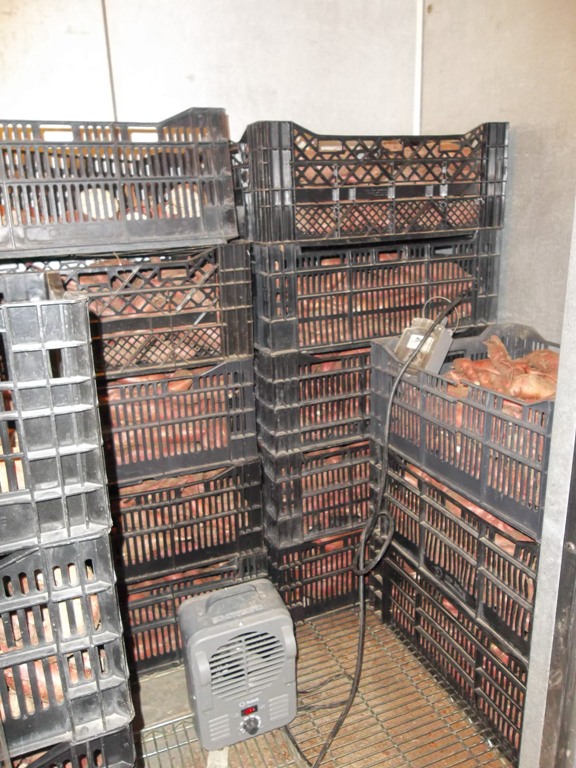
Understanding what conditions you must meet in order for sweet potatoes to cure is one thing. Figuring out how to create those conditions within your home is a whole different story.
One way to create these conditions is in a small closet. You just put the sweet potatoes in the closet, but don’t wash them because as soon as you wash the sweet potatoes this takes away their shelf life.
Then you add a bucket of water to the closet too.
Finally, you add a space heater to put off the heat that is necessary to help the curing process take place. I would recommend keeping a thermometer in the closet so you can see what is taking place as far as heat goes.
Then if the closet gets too hot, then you’ll know to lower the temperature of the space heater. If it isn’t warming up enough, then you’ll know to raise the temperature to create the ideal conditions.
Once the process is complete, you’ll move the sweet potatoes to your root cellar or other storage space where they can be stored in a cool, dry, dark location to finish curing and to be enjoyed later on.
Curing in Your Oven
If you don’t have a small closet, then you may think that curing sweet potatoes is out of the question for you.
Well, don’t be discouraged because if you have an oven, then you can easily cure your own sweet potatoes there too.
So you begin by putting a 40-watt bulb in your oven and turning it on.
Then place a pail of water in the bottom section so it can provide the necessary humidity.
Finally, you’ll close the oven door, but put something like a small ruler in the gap of the door so it doesn’t close completely. Be sure to put a thermometer in the oven as well.
Then you’ll check it in about an hour to make sure that the temperature is holding steady. If it is too warm, then you’ll put a larger object in the door to keep it a little more open.
Once you’ve got the temperature right, then you’ll allow the curing process to take place and then store it appropriately after the process is done.
Curing Sweet Potatoes in a Stand-Up Shower
Do you have a stand-up shower that you just don’t use regularly? I know some people have stand-up showers in their guest bathrooms or in basements, that they don’t use daily.
Well, if you are one of those people, then consider putting your sweet potatoes in a bucket inside of your shower. If it is glassed in, this will work even better as this helps hold in the heat and humidity.
Next, you’ll put the heater inside the shower and add a bucket of water to help provide the necessary humidity.
Again, be sure to put a thermometer in the shower with the sweet potatoes so you can be sure to monitor the temperatures and adjust the conditions accordingly if you have too little or too much heat.
Once you have the conditions just right, allow the curing process to take place. Then store the potatoes appropriately when the process is finished.
Curing Sweet Potatoes in a Plastic Bag
This is a really simple idea, but in theory, it is very simple and should work. You just need a basic plastic bag to place a single layer of sweet potatoes in the bag.
Then you’ll need to poke a few holes in the sweet potatoes before placing them in that single layer within the bag.
Next, you’ll close the bag and place it in front of a warm window, in a sunroom, or any other area where the sweet potatoes will get enough warmth. If there is a draft in some of these locations, then you can place a towel or a quilt over them.
Then you leave them for 10 days. The potatoes that are firm and moist are ready. The sweet potatoes that are soft should be discarded.
What to Avoid with Sweet Potatoes
There are 2 main culprits to avoid once your sweet potatoes are cured. First, you need to avoid cold temperatures. This will cause your sweet potatoes to turn a darker color and ruin them.
So you don’t want to store your cured sweet potatoes in cold locations such as your fridge.
Second, you need to avoid bruising your sweet potatoes. Even cured sweet potatoes will bruise easily. Remember, when produce gets bruised, it just creates a place for rot to form. When rot forms, your harvest is in danger.
So be gentle on your sweet potatoes so they can last.
A Few Quick Tips

I realize there may be a few other questions left to answer when curing and storing sweet potatoes. Let’s begin with how long sweet potatoes can last when cured.
First, if you cure your sweet potatoes, they can last up to one year. Everyone’s curing process can vary depending on how close they get to the actual recommended conditions.
So to be on the safe side, it is a good idea to meet the recommended conditions and allow the potatoes to stay in them for about a week. If your potatoes begin to darken, then you know that you need to turn up the heat because your potatoes are being stored in colder than desired temperatures.
Next, be sure that you have a proper location to store your sweet potatoes. This can be in a root cellar, in wooden boxes in a closet or basement, or you could do what I once did. I stored my produce in wooden boxes under my bed.
Either way, be sure to place them in the box in an orderly fashion with straw or sawdust to separate them to reduce the opportunity for rot to take place and ruin your harvest. You can also wrap them individually in a newspaper to keep them from directly touching and allowing rot to form.
Third, I mentioned this a little before, but be sure not to wash your sweet potatoes. Some people say that their potatoes are covered in hard clay so they give them a slight wipe down to remove some of the clay and haven’t faced any issues with rot.
However, unless your sweet potatoes are just really nasty, then I’d recommend avoiding washing them. This brings moisture to your products which obviously gives rot a head start.
Once you wash them, they are no longer shelf-stable and won’t last more than a week or two.
Finally, how will you know that your sweet potatoes have actually cured? In my own experience, the best way to judge is after between 7-10 days when you check them, they should be moist but more firm. If this is the case, then they are ready to be stored for another 6-8 weeks before eating.
So I think we have covered all you will need to know when curing a sweet potato. Hopefully, this will help you to enjoy your harvest all year long.
